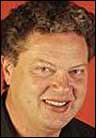Jul 29, 2008The RFID Pathfinder Group a New Zealand organization that promotes the adoption of Electronic Product Code (EPC) standards, indicates that preliminary trials of ultrahigh-frequency (UHF) RFID tags showed them to be more efficient and cost-effective for tracking livestock than traditional low-frequency (LF) tags. UHF tags, the researchers found, resulted in greater speed, accuracy and reliability when tracking deer, sheep or cattle.
The group has called for further testing to determine whether UHF tags should be employed instead of the LF tags mandated by the National Animal Identification and Tracing (NAIT) project, set up by the government to improve livestock traceability. However, NAIT project manager Craig Purcell says his organization plans to push ahead with LF tags because the technology has been proven and is currently used to track livestock worldwide. Nonetheless, he adds, once UHF RFID's effectiveness for tracking livestock is well confirmed, NAIT intends to welcome the use of ultrahigh-frequency tags by farmers.
The New Zealand government recently allocated more than NZ$23 million (US$17 million) for a system that aims to have all cattle and deer tagged with radio frequency identification transponders by 2011 (see New Zealand's National Cattle ID Project Gets $23 Million). Farmers, saleyards and meat processors will be legally mandated to tag deer and cattle with LF HDX or FDX tags, linked to a database containing details of the animals and their movements.
But the Pathfinder Group's chairman, Alan Mayo, argues that if NAIT does not consider the use of UHF tags, the New Zealand livestock industry could miss out on substantial benefits in operational efficiency and cost reduction. "The trials concluded that it is technically feasible to track livestock using UHF," Mayo states, "and that it is beneficial in two key areas. The first is cost—UHF tags are cheaper than LF tags, and the cost is coming down even further as the technology matures and heads towards mainstream adoption."
The RFID Pathfinder Group recently published the results in a report entitled "RFID Technical Study: The Application of UHF RFID Technology to Animal Ear Tagging in Deer, Sheep and Cattle Farming."
The researchers tested two UHF RFID ear tags: One was a button tag tuned to operate at 866 MHz; the other was a hangtag operating at 860 to 960 MHz. Both types complied with the EPC Gen 2 standard. According to Mayo, the performance of the 866 MHz UHF tags was superior to that of the LF tags, with almost 100 percent readability of tags for specific reader antenna layouts, under conditions far exceeding current NAIT requirements.
During the trials, Mayo says, the researchers were able to read hundreds of UHF tags per second at distances of 1.5 to 2 meters (5 to 6.6 feet). LF RFID interrogators, which operate at 125 or 134 kHz, can generally read only one tag at a time, from distances of just centimeters.
"Animals like deer often run through gateways at high speed and in dense packs, but we were still able to detect the tags using UHF," Mayo says. "You can get close to 100 percent readability with LF tags, but the movement of animals must be carefully controlled."
The results, Mayo says, were impressive. With sheep, half of the 32 test runs resulted in 100 percent tag readability, while another five showed more than 90 percent readability. For cattle, four of the 11 test runs resulted in 100 percent readability, while four of the 13 test runs for deer registered 100 percent readability. "I think we have shown clear reasons why UHF technology should be investigated further, including price and performance," Mayo says. "It makes sense to look at new technology as it develops, in order to generate the most benefits from RFID."
The Pathfinder Group recommended further testing of UHF tags, including tags operating in both RF bands allocated for RFID use in New Zealand (864 to 868 MHz and 921 to 929 MHz), under all weather conditions, with larger test sample sizes and in other applications, such as saleyards.
According to Mayo, the group hopes to work with NAIT to determine if it can take the next step with UHF—from feasibility to proven technology and, eventually, to commercial rollout. However, Purcell says, NAIT does not have the authority to invest in research and development. "Our mandate is to develop and deploy an LF-based tracking system," he explains, "and Pathfinder will have to find other organizations to invest in research into UHF tags. But we do support investigation into enhancements of RFID technology."
Purcell acknowledges that the trials showed promising results. Pathfinder, he says, appears to have overcome past problems, such as water in animals affecting read rates, and the trial demonstrated good readability at fast rates. The group "cracked the challenges of using UHF tags to track livestock," he notes, adding that the next step would be to develop an end-to-end system.
"They need to develop a full RFID infrastructure, including tags, readers and hardware, but that is most likely to be years away," Purcell says. "NAIT does not have the luxury to put our plans on hold until that develops. LF is the standard because we know we can operate a tracking system successfully and have seen it happen around the world. We are not aware of a national system using UHF."
Purcell notes, however, that the system being developed by NAIT is "technology-neutral" and could, therefore, receive information in various ways. If UHF technology is proven in livestock tracking, he says, farmers could begin using UHF tags. "It is not an either-or situation—we could always run LF and UHF tags together without throwing the old system out," he states. "We are very interested in new technology and would be crazy not to be aware of what is around the corner."


